No products in the cart.
Great news! The Canada Post strike is over! We’re resuming deliveries to Canada!
Excellente nouvelle ! La grève de Postes Canada est terminée ! Nous reprenons les livraisons vers le Canada !
Great news! The Canada Post strike is over! We’re resuming deliveries to Canada!
Excellente nouvelle ! La grève de Postes Canada est terminée ! Nous reprenons les livraisons vers le Canada !

Vicks AntiGrip Max powder for oral solution with lemon flavor in sachets 10 pcs.
$26.79
Free Worldwide Shipping
Estimated delivery:
14 - 21 days
Categories: Cold and flu, Pain relief
Brand: Procter & Gamble
The active ingredients of Vicks AntiGrip Max powder for oral solution lemon No. 10 are Paracetamol, Phenylephrine hydrochloride.
Pharmacological properties
Pharmacodynamics. Paracetamol has analgesic, weak anti-inflammatory and antipyretic effects, which occur mainly due to a decrease in the synthesis of prostaglandins in the CNS.
Phenylephrine hydrochloride is a synthetic adrenomimetic agent with minimal central activity that stimulates α-adrenergic receptors. It is an anti-edematous agent and acts by vasoconstriction, reducing swelling, particularly swelling of the nasal mucosa and paranasal sinuses, and thus reducing nasal congestion.
Pharmacokinetics. Paracetamol is rapidly and completely absorbed mainly in the small intestine, C max in blood plasma is reached 15-20 minutes after oral administration. Systemic bioavailability is due to presystemic metabolism and, depending on the dose, is 70-90%. It is rapidly and widely distributed in the body, T ½ from blood plasma is approximately 2 hours. The main metabolites are glucuronide and sulfate conjugates (80%), which are excreted in the urine.
Phenylephrine hydrochloride is rapidly absorbed from the gastrointestinal tract. Presystemic metabolism is high and is about 60%, resulting in systemic availability of about 40%. C max in blood plasma is achieved after 1-2 hours, T ½ from blood plasma is 2-3 hours. When administered orally as a decongestant, phenylephrine should usually be administered at intervals of 4-6 hours.
Indication
Symptomatic treatment for colds and flu (headache, body aches and pains, sore throat, nasal congestion and fever).
Application
For internal use.
Dissolve the contents of 1 sachet in a standard cup (250 ml) of hot, but not boiling, water. Take warm. Given the presence of ascorbic acid in the composition of the drug, it is not recommended to drink alkaline mineral water after its use.
Adults: 1 sachet per dose. If necessary, the application can be repeated every 4-6 hours.
Children aged 15 and over: 1 sachet per dose. If necessary, the application can be repeated every 6 hours.
Elderly patients: no special dose adjustment is necessary.
The maximum daily dose is 4 sachets.
The course of treatment should last no more than 3-5 days. If the symptoms of the disease do not disappear, you should consult a doctor.
Contraindication
Hypersensitivity to paracetamol or to any other component of the drug.
Severe coronary artery disease, hypertension. Diabetes mellitus. Angle-closure glaucoma. Severe hyperthyroidism, prostatic hypertrophy. Urinary retention. Pheochromocytoma.
Alcoholism. Acute hepatitis. Pancreatitis. Severe liver dysfunction. Kidney dysfunction.
Patients taking MAO inhibitors (or within 2 weeks after stopping such treatment), tricyclic antidepressants, vasodilators, β-adrenergic blockers and other sympathomimetics.
Phenylketonuria. Thrombosis, tendency to thrombosis, thrombophlebitis. Congenital hyperbilirubinemia, glucose-6-phosphate dehydrogenase deficiency, blood diseases, severe anemia, leukopenia.
Side effects
Stop using the drug and consult a doctor immediately if adverse reactions occur.
From the side of the circulatory and lymphatic system: anemia, sulfhemoglobinemia and methemoglobinemia (cyanosis, shortness of breath, heart pain), hemolytic anemia. With prolonged use in doses exceeding therapeutic, aplastic anemia, pancytopenia, thrombocytopenia, which can cause nosebleeds and / or bleeding gums, bruising, leukopenia, neutropenia, agranulocytosis, were noted.
On the part of the immune system: anaphylaxis, hypersensitivity reactions, including itching, rashes on the skin and mucous membranes (usually generalized, erythematous rashes, urticaria), Quincke’s edema, erythema multiforme (including Stevens-Johnson syndrome), toxic epidermal necrolysis (Lyell’s syndrome), anaphylactic shock.
Nervous system: vertigo (dizziness), dizziness, irritability, headache, psychomotor agitation, disorientation, insomnia, restlessness, impaired consciousness, nervousness, tremor and anxiety (usually develop when taking high doses), increased excitability.
On the part of the organ of vision: eye pain, burning in the eyes, blurred vision, photophobia, acute angle-closure glaucoma.
From the cardiovascular system: tachycardia, bradycardia, heart pain, shortness of breath, feeling of increased heartbeat, increased blood pressure, arrhythmia.
On the part of the digestive system: heartburn, nausea, vomiting, diarrhea, loss of appetite, epigastric pain.
On the part of the hepatobiliary system: impaired liver function, increased activity of liver enzymes in the blood plasma, usually without the development of jaundice, hepatonecrosis (dose-dependent effect).
On the part of the endocrine system: hypoglycemia, possible development of hypoglycemic coma.
On the part of the urinary system: urinary retention, difficulty urinating.
Respiratory system: bronchospasm in patients sensitive to acetylsalicylic acid and other nonsteroidal anti-inflammatory drugs.
Adverse reactions that may be due to the presence of ascorbic acid in the preparation
From the urinary system: damage to the glomerular apparatus of the kidneys, crystalluria, renal failure.
Skin: eczema.
On the part of the endocrine system: impaired glycogen synthesis up to the appearance of diabetes mellitus.
From the cardiovascular system: myocardial dystrophy.
From the side of the hematopoietic system: thrombocytosis, hyperprothrombinemia, thrombocytopenia, erythrocytopenia, neutrophilic leukocytosis.
From the nervous system: sleep disturbances, feeling of heat, increased fatigue.
Metabolic disorders: zinc and copper metabolism disorders.
Special instructions
Do not use with other drugs containing paracetamol. Do not take with alcohol.
Paracetamol should be used with caution in patients taking hepatotoxic drugs, digitalis preparations, methyldopa or other antihypertensive drugs; with chronic malnutrition (low hepatic glutathione levels), Raynaud’s phenomenon, asthma, granulocytopenia, arrhythmias, chronic lung diseases.
It is necessary to consult a doctor about the possibility of using the drug in patients with impaired renal and hepatic function. The use of paracetamol in patients with impaired hepatic function and patients receiving long-term therapy with high doses of paracetamol requires regular monitoring of liver function.
It should be taken into account that patients with alcoholic liver damage are at increased risk of hepatotoxic effects of paracetamol.
Drugs containing sympathomimetics can act as cerebral stimulants, causing insomnia, nervousness, hyperpyrexia, tremor, and epileptiform convulsions.
Concomitant use with halogenated anesthetics such as chloroform, cyclopropane, halothane, enflurane, or isoflurane may cause or worsen ventricular arrhythmias.
If the headache becomes persistent, you should see a doctor.
Do not exceed recommended doses, especially in patients with increased blood clotting.
Before starting treatment, you should make sure that drugs containing sympathomimetics should not be used simultaneously by multiple routes, i.e. internally and topically (drugs for the nose, ears, and eyes).
Excipients: Ascorbic acid. One sachet of the drug contains 100 mg of ascorbic acid.
Ascorbic acid as a reducing agent can affect the results of laboratory tests, for example, when determining the blood glucose, bilirubin, transaminase activity, LDH. Absorption of ascorbic acid can be impaired in intestinal dyskinesias, enteritis, and achilia.
Since ascorbic acid has a mild stimulating effect, it is not recommended to take the drug at the end of the day.
Since ascorbic acid increases iron absorption, its use in high doses can be dangerous for patients with blood diseases. Patients with high iron levels in the body should take ascorbic acid in minimal doses.
Sucrose. The daily dose of the drug contains 7.75 g of sucrose. Patients with rare hereditary problems of fructose intolerance, glucose-galactose malabsorption or sucrase-isomaltase deficiency should not take this medicine.
Aspartame. The product contains aspartame (E951), a source of phenylalanine, equivalent to 14 mg/dose. May be harmful for patients with phenylketonuria.
Sodium: This medicine contains 118 mg sodium/dose. Caution should be exercised when used in patients on a controlled sodium diet.
Use during pregnancy or breastfeeding. Should not be used during pregnancy or breastfeeding.
The ability to influence the reaction speed when driving vehicles or working with other mechanisms. Does not affect.
Children. Use in children over 15 years of age. Not recommended for use in children under 15 years of age unless directed by a doctor.
Interactions
Metoclopramide or domperidone may increase the rate of absorption of paracetamol, and cholestyramine reduces the absorption of paracetamol.
Before using the drug, you should consult a doctor if the patient is using warfarin or similar drugs that have an anticoagulant effect. With prolonged regular use of paracetamol, the anticoagulant effect of warfarin and other coumarins may be enhanced, increasing the risk of bleeding; periodic use has no significant effect.
Paracetamol increases the plasma levels of acetylsalicylic acid and chloramphenicol. Due to the increased risk of renal dysfunction, similar to that resulting from the use of NSAIDs, only short-term use with acetylsalicylic acid is possible.
Probenecid inhibits the conjugation of paracetamol with glucuronic acid and thus leads to a decrease in paracetamol clearance by almost half. When using probenecid simultaneously, the dose of paracetamol should be reduced.
Concomitant use of paracetamol and azidodeoxythymidine (AZT) (zidovudine) increases the risk of neutropenia. Therefore, concomitant use of paracetamol and AZT should be under medical supervision.
Barbiturates reduce the antipyretic effect of paracetamol.
Anticonvulsants (including phenytoin, barbiturates, carbamazepine), which stimulate the activity of liver microsomal enzymes, may enhance the toxic effect of paracetamol on the liver due to an increase in the degree of transformation of paracetamol into hepatotoxic metabolites. With the simultaneous use of paracetamol with hepatotoxic agents, the toxic effect of the drugs on the liver increases.
Simultaneous use of high doses of paracetamol with isoniazid increases the risk of developing hepatotoxic syndrome. Paracetamol reduces the effectiveness of diuretics.
Phenylephrine may interact with other sympathomimetics, vasodilators, causing side effects.
Phenylephrine may reduce the effectiveness of β-adrenergic blockers, methyldopa, and reserpine. Concomitant use of phenylephrine with these drugs may lead to the development of hypertensive crisis. Diseases in which these drugs are used are a contraindication to the use of this drug.
MAO inhibitors enhance the effects of phenylephrine. Concomitant use of phenylephrine with MAO inhibitors and tricyclic antidepressants may lead to the development of hypertensive crisis. Phenylephrine may enhance the anticholinergic effects of tricyclic antidepressants.
Concomitant use with ergot alkaloids (ergotamine, methysergide) increases the risk of ergotism.
Drugs that induce liver enzymes, such as alcohol, barbiturates and tricyclic antidepressants, may increase the hepatotoxicity of paracetamol, especially after overdose. Should not be used in patients during treatment with MAO inhibitors or within 14 days of stopping such treatment.
This drug may increase the likelihood of arrhythmias in patients taking digitalis preparations. May enhance the cardiovascular effects of other sympathomimetic amines (decongestants).
Due to the presence of ascorbic acid in the composition, the drug reduces the toxicity of sulfonamide drugs, weakens the effect of heparin and indirect anticoagulants, promotes iron absorption, increases the absorption of penicillin and tetracycline, and enhances the side effect of salicylates (risk of crystalluria).
The use of oral contraceptives, drinking juices, and alkaline drinks reduce the level of vitamin C in the body.
Vitamin C in combination with deferoxamine increases tissue iron toxicity, especially in the heart muscle, which can lead to circulatory decompensation. Therefore, the drug can be taken only 2 hours after the deferoxamine injection.
Vitamin C increases the total clearance of ethyl alcohol.
If the recommended doses are significantly exceeded, the drug may reduce the effectiveness of tricyclic antidepressants, neuroleptics – phenothiazine derivatives, tubular reabsorption of amphetamine, disrupt the excretion of mexiletine by the kidneys, and inhibit the disulfiram-alcohol reaction in people treated with disulfiram.
Overdose
Paracetamol. Liver damage is possible in adults who have taken ≥10 g of paracetamol and in children who have taken 150 mg/kg of body weight. The use of ≥5 g of paracetamol can lead to liver damage if the patient is on long-term treatment with carbamazepine, phenobarbital, phenytoin, primidone, rifampicin, St. John’s wort or other drugs that induce liver enzymes; regularly consumes alcohol or is suspected of having glutathione depletion, for example, in case of dietary disorders, cystic fibrosis, HIV infection, starvation, cachexia.
Symptoms of paracetamol overdose within the first 24 hours include pallor, nausea, vomiting, anorexia, and abdominal pain. Liver damage may occur 12-48 hours after ingestion. Abnormal glucose metabolism and metabolic acidosis may occur. In severe poisoning, liver failure may progress to encephalopathy, hemorrhage, hypoglycemia, cerebral edema, and death. Acute renal failure with acute tubular necrosis, indicated by back pain, hematuria, and proteinuria, may develop even in the absence of severe liver damage. Cardiac arrhythmias and pancreatitis have been reported.
With prolonged use of the drug in high doses, aplastic anemia, pancytopenia, agranulocytosis, neutropenia, leukopenia, thrombocytopenia may develop from the hematopoietic system. When taking high doses, dizziness, psychomotor agitation and disorientation may occur from the CNS; nephrotoxicity (renal colic, interstitial nephritis, capillary necrosis) may occur from the urinary system.
Other symptoms may include depression, cardiovascular disorders, and kidney damage.
Treatment. In case of overdose, urgent medical attention is required. The patient should be taken to hospital immediately, even if there are no early symptoms of overdose. Symptoms may be limited to nausea and vomiting or reflect the severity of the overdose or the risk of organ damage. Treatment with activated charcoal should be considered if an overdose of paracetamol has been taken within 1 hour. The concentration of paracetamol in the blood plasma should be measured 4 hours or later after ingestion (earlier concentrations are unreliable). Treatment with N-acetylcysteine can be used within 24 hours of paracetamol ingestion, but the maximum protective effect occurs when it is used within 8 hours after ingestion. The effectiveness of the antidote decreases sharply after this time. If necessary, the patient should be given N-acetylcysteine intravenously, according to the established dose list. In the absence of vomiting, oral methionine can be used as a suitable alternative in remote areas outside the hospital.
Treatment of patients with severe hepatic impairment within 24 hours of ingestion should be supervised by a specialist in the treatment of poisoning or hepatic impairment.
Phenylephrine hydrochloride. Symptoms: headache (may be a symptom of hypertension), convulsions, palpitations, feeling of palpitations, vomiting. Signs of severe phenylephrine overdose include hemodynamic changes and cardiovascular failure with respiratory depression.
Treatment includes early gastric lavage, symptomatic and supportive measures. Hypertensive effects may be treated with alpha-adrenergic blockers.
Symptoms of ascorbic acid overdose include nausea, vomiting, abdominal bloating and pain, itching, skin rash, increased excitability and increased possible adverse reactions described in the Adverse Reactions section.
With prolonged use in high doses, inhibition of the insular apparatus of the pancreas (hyperglycemia, glucosuria) is possible, therefore its function must be monitored; development of cystitis; acceleration of the formation of stones (urates, oxalates).
When using ascorbic acid at a dose of 1 g/day, irritation of the digestive tract mucosa and exacerbation of urolithiasis are possible, therefore it is contraindicated to exceed the recommended doses of the drug. Due to the stimulating effect of ascorbic acid on the formation of corticosteroid hormones, when using it in high doses, it is necessary to monitor kidney function and blood pressure.
Treatment: gastric lavage, alkaline drinking, taking activated charcoal or other sorbents, symptomatic therapy.
Storage conditions
At a temperature not exceeding 25 °C.
Information about the medicinal product for healthcare professionals.
2 reviews for Vicks AntiGrip Max powder for oral solution with lemon flavor in sachets 10 pcs.
Add a review Cancel reply
You may also like


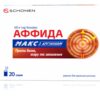
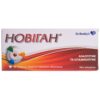

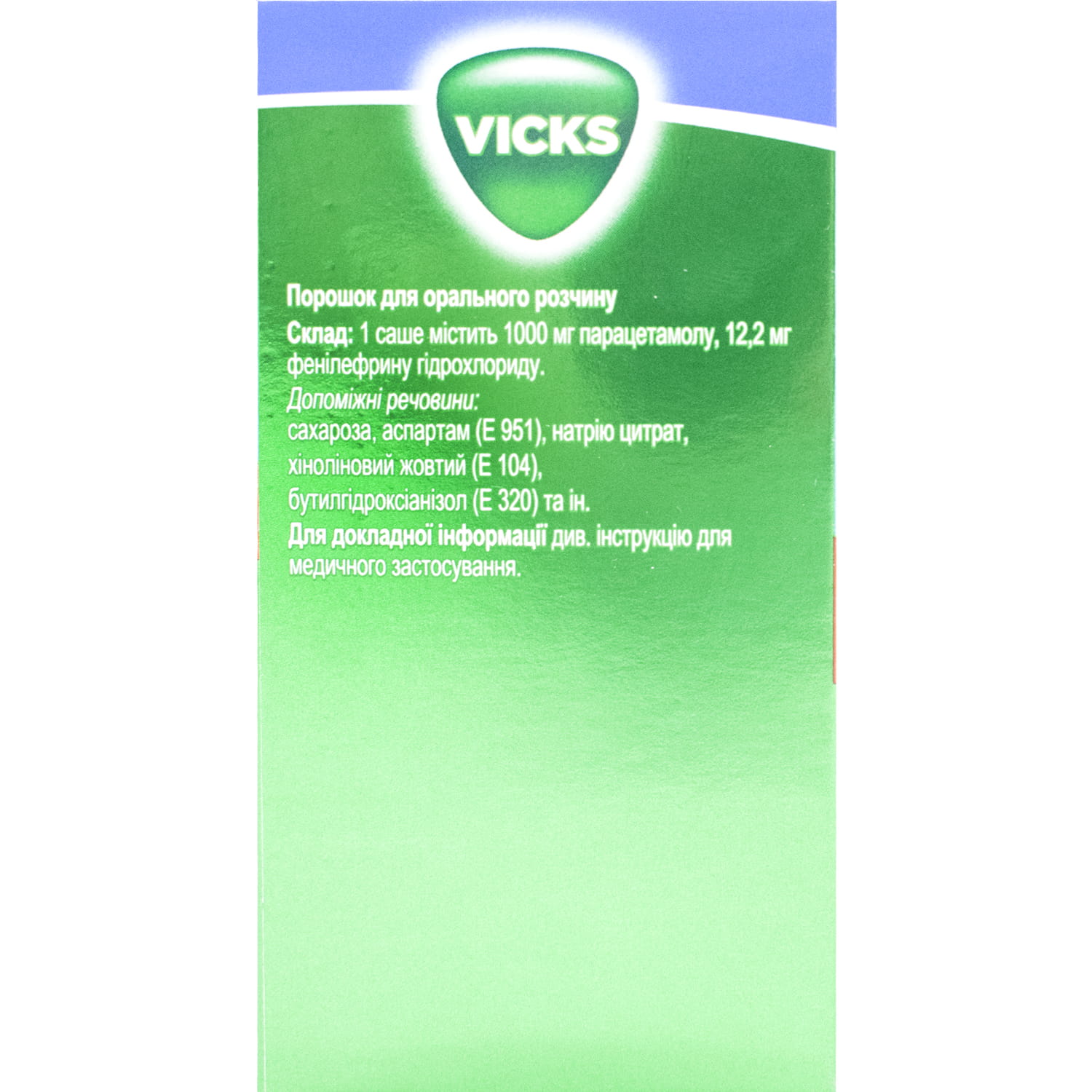
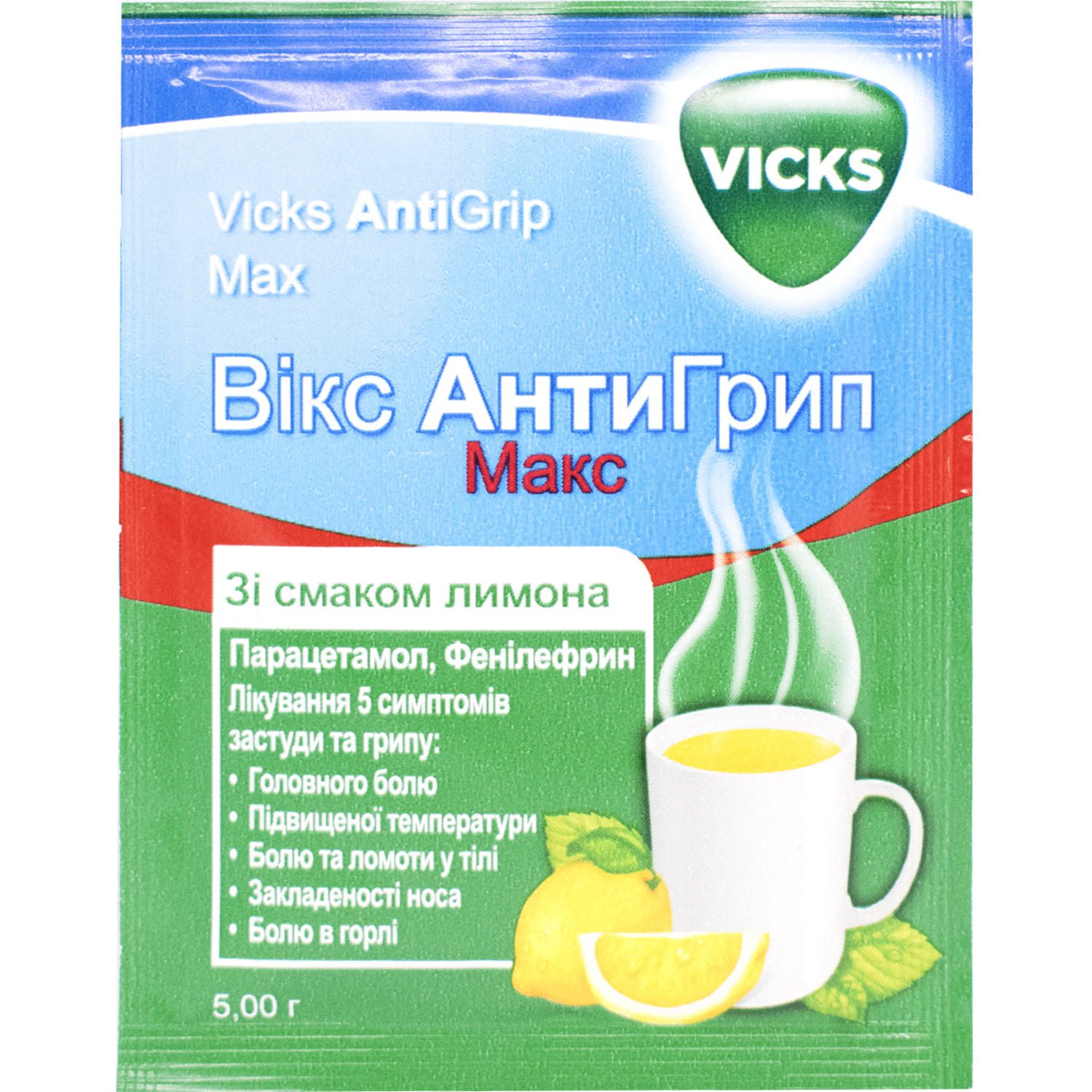
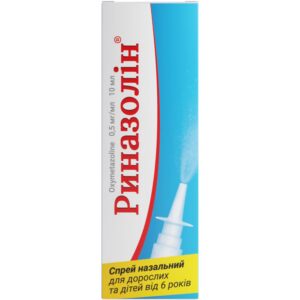
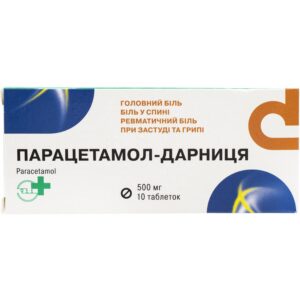

Nate –
Definitely my favorite among hot teas for colds. Quickly relieves cold symptoms, pleasant taste (not bitter). Thank you for such a great recommendation!
Daniel –
Convenient portioned packets with powder that dissolves easily and has a pleasant taste. Very quickly helps to cope with the first symptoms of a cold. I recommend!